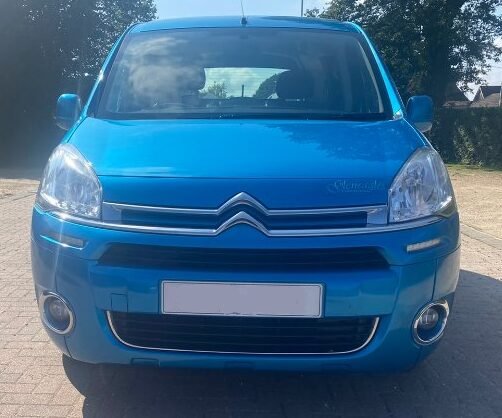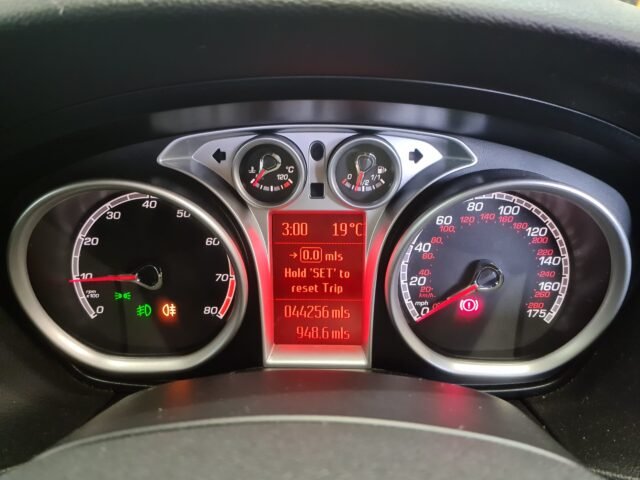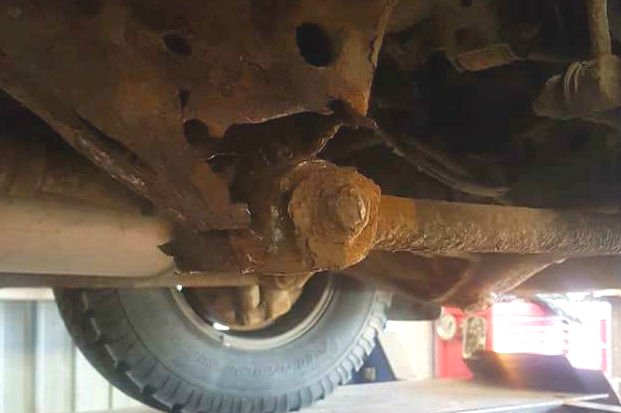Introduction to testing your potential new car
Buying a 'new' used car can be an exciting, yet daunting prospect for many. Being prepared on what to look for before making your purchase can help you make a more informed choice and potentially spot any problems that may have been missed.
It is important to note that the ultimate way to check a used car is to arrange for an independent inspection of the vehicle before purchase and most dealers, even private sellers are normally happy to facilitate this. However, in the instances where the car cost doesn't justify the cost of an inspection, or a quicker turnaround is needed here is a quick guide of areas to check which hopefully can prompt a few checks you may not of considered.
Carrying out a full check is important, so not only does this include the typically test drive but also a features/functionality check of all the items on the car. Even if something is discovered, but the rest of the car is right for you, the fact it was discovered before the purchase can help you make that informed choice.
Are you legally allowed to test drive the car?
Many people overlook the law when taking a car out for a test drive. When driving a car on a public road it is essential to make sure firstly that you have the minimum required insurance cover and that the vehicle is road legal with an MOT and vehicle excise duty (tax).
Many vehicles sold privately have a valid MOT and tax, so simply ensure that your insurance covers you for driving a third party vehicle before going on the test drive. If these aren't present then they will need to be added to the vehicle before a test drive or alternatively you will need to take the vehicle to a pre booked MOT for an assessment.
Most dealerships and independent traders will have additional steps in process to help assist with the test drive process. Trade plates are often used to allow an untaxed vehicle to drive on the road for test and demonstration purposes and many dealers/traders will have the required insurance in place to allow you to test drive their vehicles too.
Lastly, when making a private purchase it is always advised to meet the seller at their home address so that you can verify and link any documentation to the correct address.
A quick visual tour of the car with your eyes.
There are many signs visually that can give away how a car has been treated and what a car has been through in the past. Many possibilities include coverups, accident damage repairs, signs of rust/bubbling of paint etc.
The first area to check is to take a visual tour around the car and look out for any obvious signs of damage to the exterior of the vehicle. Look out for signs of rust, paint bubbling or lacquer marks on the surface of the paint which can all indicate that a costly paint repair or welding repair may be due.
A good place to also check is along rubber seals to see if any paint 'overspray' is present (fine splattering of paint), or whether there is flaking paint or colour changes along the edges as this is a clear indication of poor crash or accident damage repair.
Make sure on your visual inspection you look at all angles particularly paying attention to the way sunlight bends on the paint as this will highlight colour differences, dents and creases, all signs of body repair in the past.
The last visual check should be on the ground, in the engine bay and the cars interior. Signs of oil leaking, misting of oil or other liquid marks could potentially cause alarm. It's also worth checking the interior for rips, tears, marks, scratches.
It is important to note with any used car that the older the vehicle or the higher the mileage the more likely you are to experience cosmetic issues. Many areas such as small chips, light surface marks etc are to be expected. If in doubt, ask the seller and gauge their response.
Trust your nose, unusual smells can give away many issues.
The way a car smells can hint towards many issues and can be an early indicator of something being wrong. Our advise is to keep an eye out for smells during the full duration of your test.
Engine smells such as 'fuel' or 'oil' smells can indicate an engine running issue, sweet smells often indicate a coolant leak with the coolant burning off and exhaust/fume smells can indicate an exhaust leak or blocked DPF.
As well as the engine it's worth considering smells inside the vehicle. A car that has been previously owned by a smoker or pet owner can have many ingrained smells that can be difficult to remove and certainly worth considering before purchasing. If the car has a significant amount of air fresheners or an exceptionally strong odour of air fresheners this can be a mask for more sinister smells.
Open your ears, sound is very important.
Trusting what you hear can be a very important part of the test drive experience. Whilst it is important to test the sound system and to gain information from the sales rep, it is also important to gauge the car by turning off the sound system and asking the sales rep to be quiet for a bit.
Typical noises you are listening out for are squeals, knocks, taps and bangs, especially when driving over rough roads, speed bumps and full lock steering. These noises can often indicate worn suspension components, low fluid levels, worn joints/shafts and similar wear & tear that will need addressing soon.
Other noises can be from the engine or gearbox area which are potentially a very serious issue, or something less sinister like poorly fitting internals or heat shields rattling. It's important to listen for all noises with the windows up and windows down.
If in any doubt over a noise then seek independent advise.
Warning lights, dash displays and beeping sounds.
Many people understand the importance of checking for warning messages or lights whilst the car is running. However it is important to also check that these warning lights are actually functioning and haven't simply been disabled or maliciously tampered with.
When you put the key in the ignition and turn the ignition on, check that the warning lights illuminate and then turn off. If a warning light does not illuminate this can be a sign that the light or system has been disabled, potentially to hide a known fault.
Common lights found on the majority of vehicles which will illuminate and then turn off are Airbag, Oil, Engine Management Light, ABS, Battery, Coil Light, DPF/Emissions, Traction Control and Tyre Pressure Monitoring Systems.
Tyre Pressure Management Systems - Check BEFORE you test.
A common error light which is often ignored is the tyre pressure system. Many people will assume a tyre pressure is simply low when low batteries, damaged sensors and punctures are often the cause which have a far greater outlay. If the TPMS light is on, ask the seller to inflate the tyre and reset the light BEFORE going on the test drive, the light should remain off throughout the duration of your test drive. If it comes back on, then there's an issue.
Does the car allow you to sit comfortable?
The sitting position, driving controls and space in a car is often overlooked by many. Before buying a car make sure that you are comfortable. Ensure when you are looking at the vehicle that it will be suitable for your requirements going forwards, e.g. is the boot big enough, can you fit the car seat(s) in comfortable, do you have any mobility or health issues which it may hamper.
Make sure you spend a bit of time testing the seat controls to make sure the seat is fully adjustable and working. Ensure that you can get the seat in a position that works for you, allows you to reach the pedals, see adequately and have the correct position for the controls.
There are many vehicles which were originally designed as left hand drive cars that have a slightly offset sitting position. If you have not experienced this or not used to it, it can potentially cause back ache or similar pains on long journeys.
Check all the features, controls and switches.
Most cars have an array of features, controls and switches inside them, modern cars especially are packed with many features from climate control through to cruise control! Some of these features can have a significant cost to repair if they are faulty.
Taking the time to run through these controls and identifying any features that are broken will help you make an informed choice before purchasing and potentially allow you to walk away from serious issues or negotiate a discount on the final price.
- Seat - Check the seat controls (manual or electric) to ensure all adjustments work
- Dash - Check all the gauges and dials work/move correctly.
- Wipers - Check the wipers work on all settings
- Electric Mirrors - Check they can be fully adjusted, fold in/out and heat up
- Central Locking - Check all doors open/shut on central locking.
- Heater - Check the heater blows warm air and cold air and works on all fan speed settings.
- Air Conditioning - If fitted, check the air conditioning gets cold.
- Windows - Check all windows go up and down smoothly, ensure ALL switches work.
- Lights - Ensure all exterior lights work, more importantly LED or Xenon lights.
- Radio - Check the radio turns on (doesn't need a code) and it plays audio from all speakers.
- Cruise Control - Check it turns on, speed can be set and similar functionality
- Traction Control - Ensure the traction control is on and can be turned on/off via the switch
- Start/Stop - If fitted make sure this can be turned on/off and isn't permanently off
- TPMS - Check the tyre pressure monitoring system is working, reset if needed before a test drive.
- Parking Sensors - Ensure front & rear sensors work if fitted
- Parking Cameras - If fitted, check the camera shows a clear image and turns on/off automatically.
- Other - Check around the car for other controls, systems and switches and where possible ensure they work correctly and as you would expect.
As a final note on this section, we wouldn't always expect every feature to work, especially on an older used car. However it is useful to understand what features do and don't work as a specific feature may be something you can ignore or something you specifically need.
Drive on as many road types and conditions.
A quick and short section but one that is incredibly important. When taking the vehicle for a test drive ensure you pick a variety of roads to enable the best chance of finding faults. We always advise to try smooth fast roads, rough slow roads and pick a car park or similar to attempt manoeuvres such as full lock turns, reversing etc.
How does the car drive? Straight? Wobbly? Pulls?
When driving the vehicle take note of the 'feel' of the vehicle as you drive. Areas to be looking out for including vibrations, wobbles or general 'light' or 'floaty' feelings when driving as these can hint to suspension issues, braking issues or tyre issues.
A car with damaged suspension or tracking issues will either pull significantly to one side, have uneven wear on the tyres or have a steering wheel that doesn't sit central when driving in a straight line.
Generally speaking, an experienced driver can often feel if a car doesn't feel quite right. Sometimes it is important to act on a gut feeling and get the issue checked.
Checking the cars history, this can show a lot!
Most savvy car buyers are well aware of carrying out a history search (HPI Check) for any potential vehicle purchase, especially if the vehicle cost is high. The HPI Check will look into the vehicles history to see if there are any known issues such as finance, mileage discrepancies, stolen etc.
It's also worth checking the MOT history of the car using the government website, this can often show signs of work/repairs it has had recently and how well the car has been maintained. You can also check the mileage records of the car as it was presented for each MOT. The MOT is a great place to check for previous advisories such as rust, corrosion and potential parts on their way out.
Check the condition of the tyres
The condition of the tyres and their treads can give a lot away about other aspects of the car. It's worth checking the tyre tread for signs of wear. Edge and uneven wear can be signs of issues with tracking or suspension components which may require further investigation.
Also, if the tyre tread is down near the wear bars this will also give you an indication of how much life is left on the tyres and when an additional expense may arise in the future.
Locking wheel tool, make sure its there!
Make sure the locking wheel nut remover is present if they are fitted to the car. This is often overlooked but can cause a significant stress to sort when you are at the side of the road with a puncture!
Whilst this isn't a problem to resolve it is worth noting this. If for any reason the tool is missing, broken or not functional then you will need to replace this asap before using the car on the road. Otherwise you risk being stuck, or stranded at the roadside.
Summarising the test
This article goes quite in depth of the various systems, checks and tests to make before buying a car. It is however important to recognise that a used car will not be perfect and it is down to you to decide if that particular identified problem is going to halt the sale, be a cause for a monetary discussion or something you can simply overlook and live with.
This article is simply a guide and in no way guarantees to cover every aspect, we also can't be held liable if for any reason you miss something or don't spot something. Our advise is to always seek an independent inspection, especially on higher value purchases.




